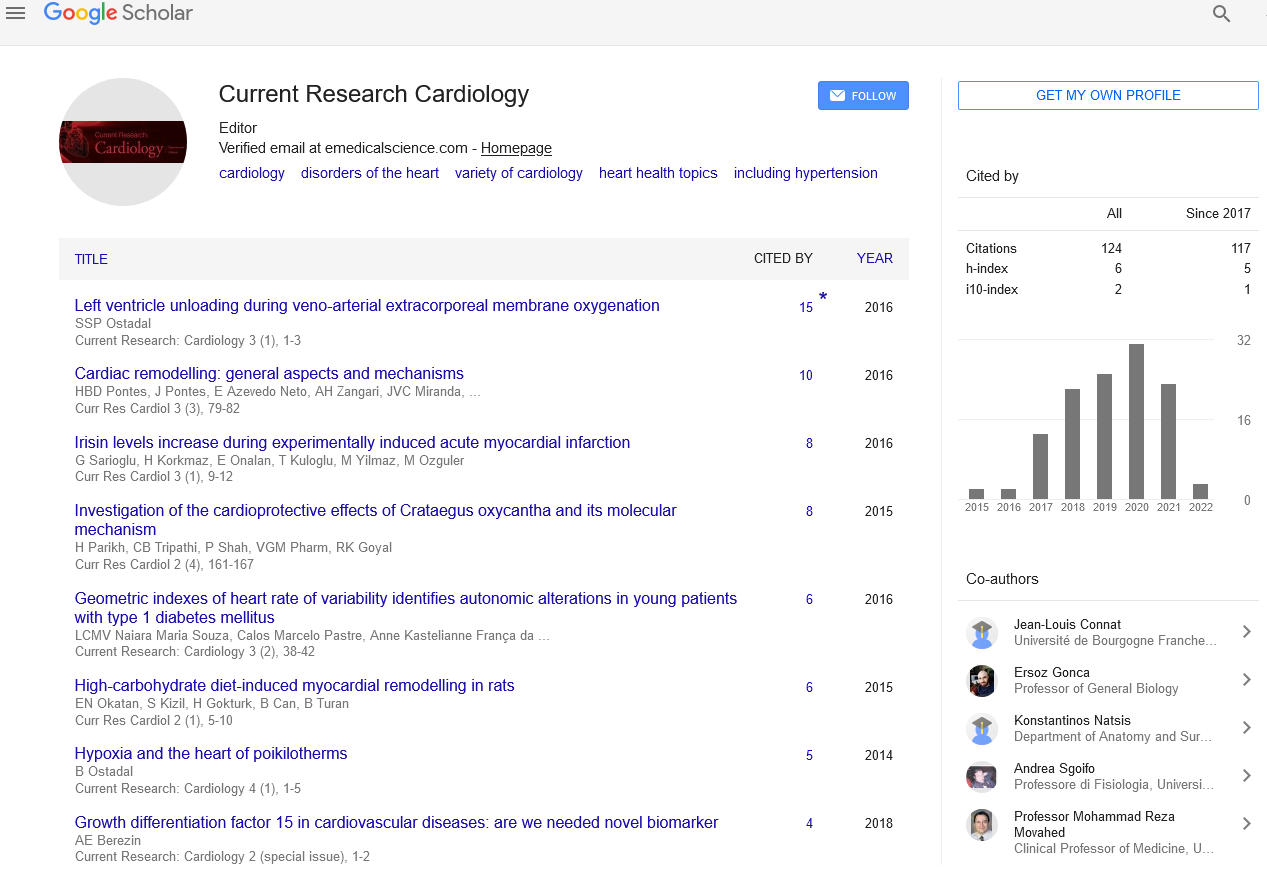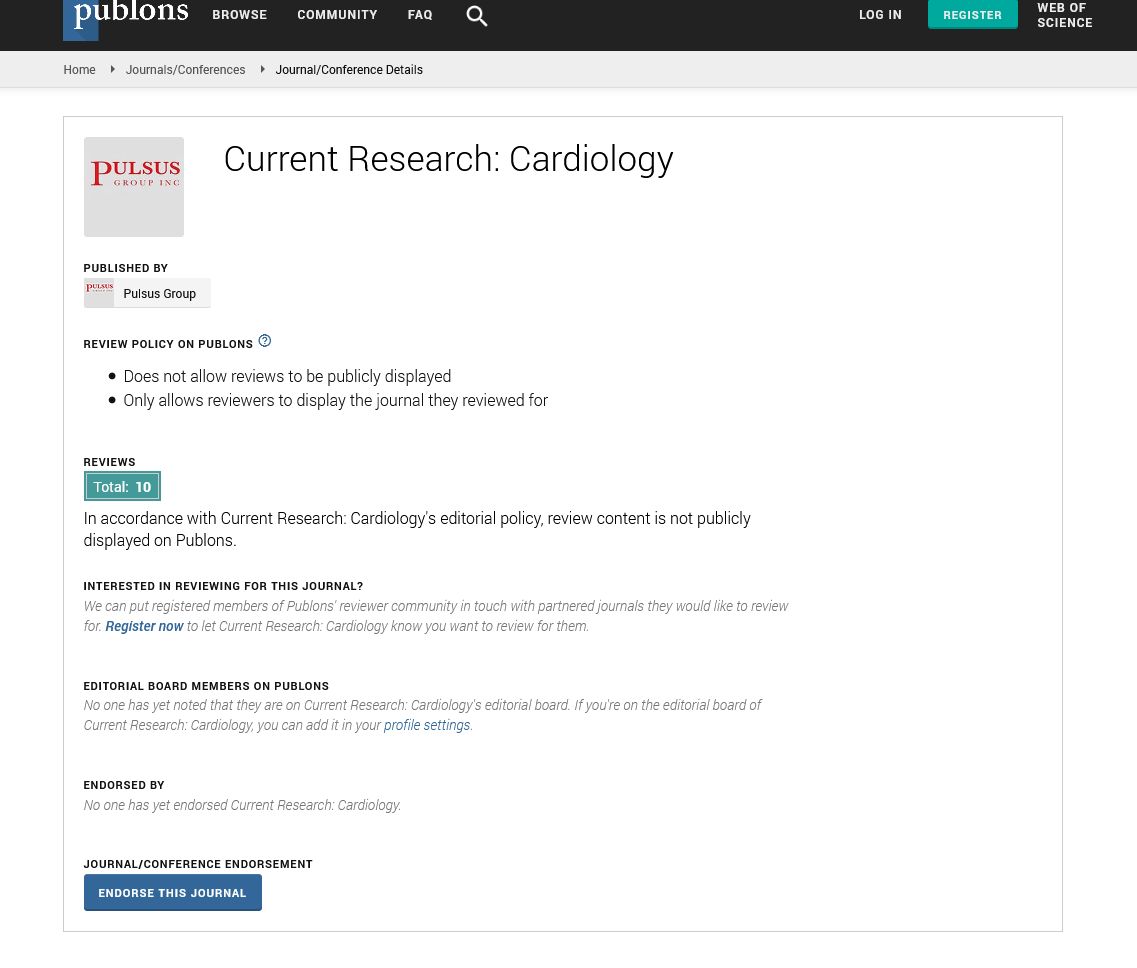Cardiovascular toxicity: Causes and diagnosis
Received: 04-Nov-2021 Accepted Date: Nov 18, 2021; Published: 25-Nov-2021
Citation: Chen X. Cardiovascular toxicity: Causes and diagnosis. Curr Res Cardiol. 2021;8(4):3.
This open-access article is distributed under the terms of the Creative Commons Attribution Non-Commercial License (CC BY-NC) (http://creativecommons.org/licenses/by-nc/4.0/), which permits reuse, distribution and reproduction of the article, provided that the original work is properly cited and the reuse is restricted to noncommercial purposes. For commercial reuse, contact reprints@pulsus.com
Description
Cardiovascular toxicity includes damage to the heart due to toxin-induced electrophysiological abnormalities and muscle damage, likewise as vascular atherosclerosis because of oxidative stress and inflammation. Taken together, these abnormalities may impair blood flow and circulation. It’s a very important environmental and drug development public health concern.
What is cardiac toxicity?
Damage to the heart muscle by a toxin is termed as cardiac toxicity. Cardiac toxicity may cause arrhythmias (changes in heart rhythm) or it can turn into heart disease. Heart failure doesn't mean that heart has stopped or is near to stop functioning. It implies that the heart muscle cannot pump with enough force to provide the body with blood containing essential oxygen and nutrients. Heart failure develops over time because the pumping action of the heart grows weaker. Here are many possible causes of cardiac toxicity. In cancer patients, cardiac toxicity could also be caused by radiation to the chest and a few chemotherapy drugs. The most well-known cause of cardiac toxicity is that the chemotherapy drug doxorubicin. Doxorubicin may be a kind of chemotherapy drug called an anthracycline. Anthracyclines may be accustomed to treat leukemia, lymphoma, myeloma and carcinoma. Other anthracyclines are daunorubicin, epirubicin, idarubicin. Other chemotherapy drugs that will cause cardiac toxicity are cyclophosphamide, fluorouracil, mitoxantrone etc. Cancer drugs that are reported to cause abnormalities in heart rate or rhythm in more than 10% of patients include arsenic trioxide, daunorubicin, denileukin diftitox, gemtuzumab ozogamicin, idarubicin, melphalan, etc.
How is cardiac toxicity diagnosed?
Cardiac toxicity is diagnosed with variety of examinations and tests such as heart sounds where doctor will listen for abnormal heart sounds with stethoscope and an additional sound apart from the normal “lub-dub” is called a murmur, and should be an indication that heart is damaged. Chest X-ray provides a one-dimensional picture of heart and lungs where it depicts regarding enlargement of heart which indicates that the heart muscle is damaged. Electrocardiogram (ECG) is a machine records the electrical activity of heart and it is used to measure the rate and regularity of your heartbeat. Echocardiogram test uses sound waves to form a picture of the heart and shows how well the heart is filling with blood and pumping it to the rest of the body. An echocardiogram is one in every of the foremost useful tests for diagnosing coronary failure. Multi Gated Acquisition (MUGA) scan is a procedure takes specialized pictures of the heart after a radioactive substance is injected into a vein where contraction and relaxation of the heart and blood supply to the heart may be visualized from the pictures. Cardiac toxicity is a serious condition. Symptoms include fatigue, shortness of breath on exertion, worsening to shortness of breath at rest, discomfort lying on your back, swelling of the ankles.
Conclusion
Cancer treatments not only kill cancer cells, but also damage or kill healthy cells. When these cells are in or around the heart, cardiac toxicity occurs. There are many sorts of cardiac injury that may happen such as cardiomyopathy is a disease of the heart that makes it hard for the heart to carry blood to the body; myocarditis called to be inflammation of the heart muscle, which lowers the heart’s pumping ability and might cause arrhythmias (problem with the rate or rhythm of the heart); swelling of the pericardium which is that the saclike membrane that surrounds the heart called as pericarditis; a reduction or blockage of blood flow to the heart which happens suddenly called as acute coronary syndromes; Congestive Coronary Failure (CCF) where the heart can’t pump or fill enough.






